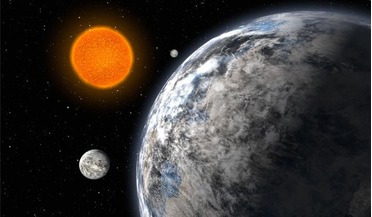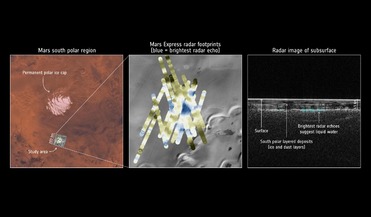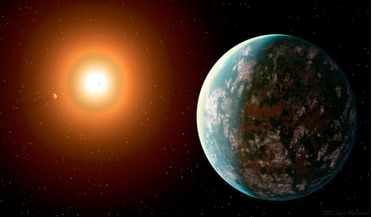 10 January 2018
Possible recipe for life on early Earth
10 January 2018
Possible recipe for life on early Earth
... acetyl coenzyme A (or acetyl-CoA) which can be found in carbohydrates, fats and proteins and transforms it into carbon dioxide as a waste byproduct. The cycle, also known as the tricarboxylic acid cycle (TCA), is so important to many biochemical...
 09 February 2018
New research on rocky worlds helps identify Earth-like planets
09 February 2018
New research on rocky worlds helps identify Earth-like planets
... is the result of a process known as photoevaporation. This occurs when so-called volatiles – substances like water and carbon dioxide – are stripped from a planet’s envelope, thus creating worlds that have a smaller radii. But more information...
 07 March 2018
World's first firing for ESA's air-breathing electric thruster
07 March 2018
World's first firing for ESA's air-breathing electric thruster
... might not solely be used in Earth’s atmosphere, as the air-breathing electric thrusters could be adapted to consume carbon dioxide for example in order to traverse the outer fringes of Mars, or the equivalent atmospheric molecules on other planets...
 23 March 2018
ESA selects ARIEL to look closely at exoplanets
23 March 2018
ESA selects ARIEL to look closely at exoplanets
... sinking or forming cloud layers, and making them easier to detect. Well-known ingredients such as water vapour, carbon dioxide and methane will be searched for with ARIEL’s metre-class telescope that looks at the molecules in visible...
 27 July 2018
A pool of liquid water found under Mars' south pole
27 July 2018
A pool of liquid water found under Mars' south pole
... the bedrock, any lingering liquid stuff is long gone - on the surface at least. Water ice and possible carbon dioxide ice does exist at the martian poles however and the presence of liquid water at the base of the...
 02 August 2019
Newly found exoplanet may be suitable for life
02 August 2019
Newly found exoplanet may be suitable for life
... which could sustain surface habitability. The team found that if GJ 357 d has a geological cycle that regulates carbon dioxide concentration like on Earth, then the surface would be lovely and warm and possibly quite liveable. However...